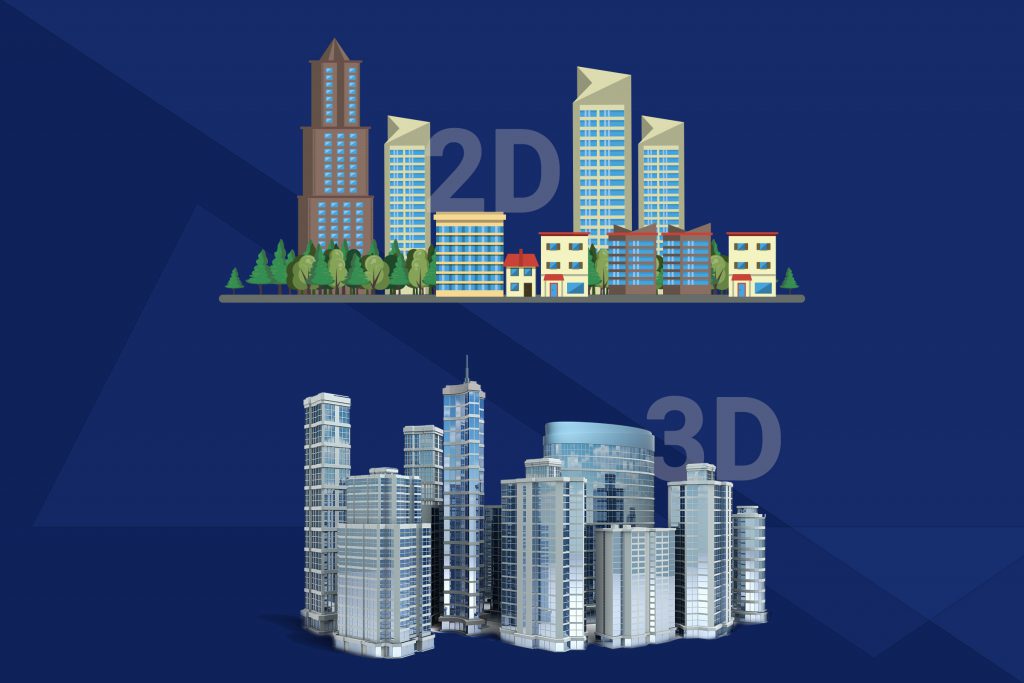From mobile apps to in-flight safety videos, animation is everywhere you look. Its popularity isn’t surprising, given that animation is an exceptional tool for businesses wanting to put a personal spin on their campaigns.
Take a minute to look at the 3D Times Square Doggo billboard (it’s seriously cool), and you’ll see how awe-inspiring an animation project can be!
Both 2D and 3D animations help deliver messages in an accessible and approachable format, but there are some differences between them.
Before starting an animation project, you want to be confident that you’ll get a return from your investment.
So, if you’re torn between the cost of 2D vs. 3D animation, let’s look at them both from a cost perspective to help you make an informed choice.
After that, if you still need an in-depth explanation of the advantages and disadvantages of 3D animation, click this link.
Average Costs of 2D and 3D Animations
First, we’ll compare the cost of 3D animation video with the less technical 2D option – both of which have a compelling range of pros and cons!
3D Animation Costs
The typical 3D animation video cost will depend on all sorts of factors:
- How long and complex your animation is.
- Whether you’re using top 3D animators or a junior team.
- Usage rights – you need to buy all the professional creative assets to use your animation commercially.
- The amount of creative planning and development required.
- How many characters you need to be designed and illustrated.
Those variables apply to both animation dimensions, but you can expect to pay more for a 3D project.
As a rough guide, you’re looking at about $100 to $199 per hour, so if your project takes 100 hours, the budget will need to be $10,000.
But that’s the lower end of the scale, and an exceptional quality 3D animation can cost anywhere from $10,000 to $20,000 per minute.
Costs for a Short 2D Animation Clip
In comparison, 2D animation is a lot more affordable. But its cost is still affected by the variables listed above.
Most 2D animations cost between $100 to $200 per animation minute for a simple task.
High-quality explainer videos with animation and professional production will usually be around $2,000 to $4,500 for a short 30-second clip, depending on the required animation style and how many revisions you make.
Is 3D Animation Worth the Extra Cost?
Budget is just one of many considerations when deciding which animation style to go for. You might be swayed to spend more or less, depending on your artistic requirements.
But there isn’t one universally suitable option; it all depends on the cost you’re willing to pay, the urgency of the project, and what sort of content you’re putting out there.
3D Animation Pros and Cons
If you’ve got the budget to pay for a proper 3D production, you get a lot of flexibility when it comes to styles and different production techniques.
However, 3D is harder to stylize; hence, it inevitably costs more to produce. Each animation step requires real skill, including staged character design, animation, along with adding in lighting, and texture to the models.
2D modeling is more straightforward because you create the characters and add the animation, which takes considerably less time.
It’s also vital to consider whether your animation project is suited to 3D before you pay out for its production.
2D Animation Pros and Cons
On the flip side, 2D animations are cheaper, faster, and easier to produce.
The software and computer power demands are lower, so you won’t need a render farm with robust graphics packages.
However, the finished animation is less dynamic than 3D, and demand for 2D is dropping as skilled animators look to apply their talents to more exciting projects.
Plus, you should keep in mind that your total costs often aren’t set in stone since with either animation technique, revisions can quickly ramp up the overall project cost.
Returns on Investment for 2D Vs. 3D Animation
If you’re still undecided or have no preference for which animation technique you use, it might help to consider the returns you can expect on your investment.
Of course, this will also change depending on the nature of your animation and overall creative strategy.
Here are a few examples of businesses that have harnessed the power of animation, making a serious market impact:
- Dropbox, the online file storage and sharing service, grew from a small startup to 100 million US users, with a 10% conversion rate increase when they introduced 2D explainer videos.
- Salesforce, the CRM platform, saw a 20% conversion increase when they launched their animated video explainer.
- Compare the Market modeled its entire brand on 3D meerkat animations that were launched in 2009 and are now the face of the price comparison company. While the company was worth a respectable £58.4 million in 2008, it has now grown into a multibillion-pound enterprise.
Those are just a few examples of hugely successful campaigns, so it’s clear that innovative businesses can transform their futures with impactful, high-quality animations.
We can’t tell you whether 2D or 3D animation will be the best fit for your company – but we can say that animation is the gold standard in consumer engagement.
As technology evolves and techniques advance, we predict animation will become a core marketing asset and campaign resource, providing lucrative returns.



